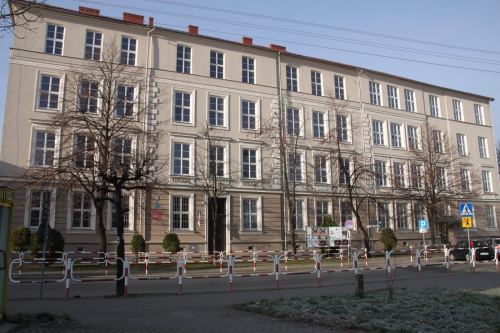The development of education in the latter part of the 19th century, and especially the rapid growth of the number of primary school pupils, was the main reason why the authorities of Wadowice erected a magnificent edifice for the female faculty school. Design and architectural work started in the mid-1890s. Among those who entered the competition for the architectural concept was the excellent Wadowice-born Cracow-based architect, Franciszek Mączyński. However, the school building in Długa (today Sienkiewicza) Street was built, in 1899-1901, most probably according to blueprints borrowed from the construction of a similar school in Rzeszów. The two-storey school pavilion had 18 rooms, of which 10 were intended for classes.
The Agricultural and Industrial Exhibition
In 1907, Wadowice hosted a large agricultural and industrial exhibition which attracted several thousand visitors from Galicia and other parts of Austro Hungary. The exhibition was divided into several sections depending on the category of products being exhibited. The exhibitors included businesses, associations and schools from across the Wadowice county, a lot of companies from Cracow and even from outside Galicia. After the closing of the official part, a festival took place at the exhibition grounds and several hundred people took part in it. Whoever went to Wadowice yesterday in order to have a close look at the exhibition did not regret having gone there on that day and not on any other; because on that last Sunday, Wadowice was not Wadowice but rather, due to the commotion which prevailed there, a tiny piece of Vienna, Paris or London. Until midday it was still quite okay in the exhibition grounds but soon after the first afternoon train, i.e. from Cracow, had arrived, all the corridors and rooms in the exhibition hall were at once filled with a crowd of visitors, and suddenly this spacious building was as overcrowded as if it were at the church during the High Mass. One can only imagine what was going on after the arrivals of the trains from the directions of Bielsko and Sucha. Nowa Reforma (‘New Reform’) daily (No. 402, 3rd September 1907).

